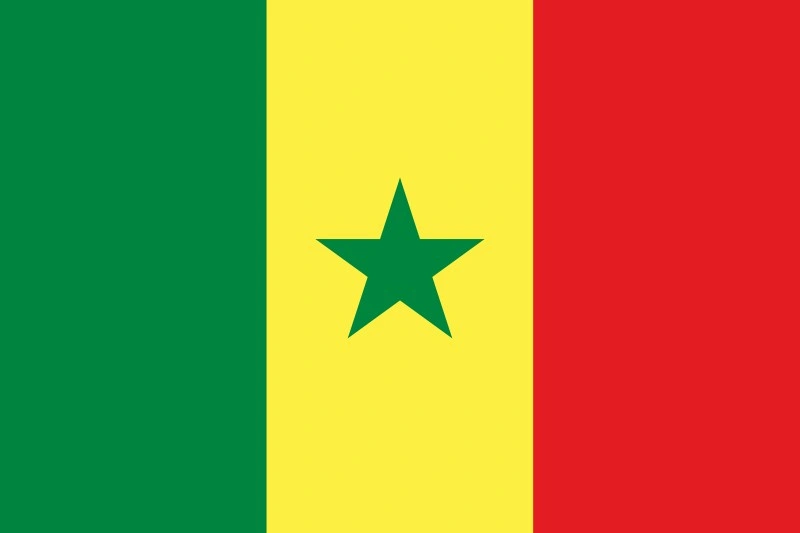Senegal - country.
Publié le 04/05/2013
Extrait du document


«
Although most of the population works in agriculture, Senegal has a growing industrial sector, one of the largest in West Africa.
Nevertheless, two cash crops remain atthe foundation of the economy—peanuts and cotton.
Important technical and economic assistance has been provided by France and other countries of the EuropeanUnion and the International Bank for Reconstruction and Development (World Bank).
In 2006 the gross domestic product (GDP) was $9.2 billion, or $760.90 a person.
A Agriculture
Agriculture occupies 77 percent of the economically active population.
However, only 13 percent of the land area is cultivated.
Senegal is among the world’s largestproducers of peanuts, which are grown in many areas, especially the northwest.
The country produced 460,500 metric tons of peanuts in 2006.
Peanuts and peanut oilprovide a significant share of yearly export earnings, although their contribution declined from 29 percent of earnings in the early 1980s to 9 percent in 1993.
The otherimportant cash crop is cotton; in 2006, 19,000 metric tons were produced.
Attempts are being made to diversify agriculture, including the expansion of rice and tomatocultivation, to achieve self-sufficiency in food.
Other crops included maize (494,345 metric tons), rice (190,493 metric tons), and sugarcane (829,500 metric tons).Livestock included 3.1 million cattle, 5 million sheep, 4.3 million goats, and 29 million poultry.
B Forestry and Fishing
Roundwood production in 2006 amounted to 6.1 million cu m (215 million cu ft).
Senegal’s coastal waters are rich in fish, and the country has a modern fishing fleet.Landings in 2005 totaled 405,264 metric tons.
C Mining and Manufacturing
Phosphates are the leading mineral product of Senegal.
In 2004 output totaled 576,000 metric tons.
A petroleum refinery with an annual capacity of 900,000 metrictons makes use of imported oil.
Other manufactures include food products, such as peanut oil, refined sugar, canned tuna, and flour; cement; fertilizers; textiles;chemicals; and tobacco products.
D Energy
In 2003 Senegal produced 1,332 million kilowatt-hours of electricity.
All electricity was thermally generated.
E Transportation and Communications
Senegal is served by a good road network of 13,576 km (8,436 mi), of which 29 percent is paved.
The country also has 906 km (563 mi) of railroads, which connect thecities along the coast and run inland to Mali.
The government of Senegal operates radio and television broadcasting.
In 1997 the country had 141 radio receivers and 37television sets for every 1,000 inhabitants.
Senegal has 13 daily newspapers, with a circulation of 45,000.
F Currency and Foreign Trade
The currency is the CFA franc, consisting of 100 centimes (523 CFA francs equal U.S.$1; 2006 average).
Central banking functions are exercised by the Central Bank of the West African States.
Senegal has a chronic trade deficit.
In 2003 exports earned $1,151 million and imports cost $2.4 billion.
Major exports include basicmanufactures, fish products, peanuts, petroleum products, and phosphates.
Main imports are crude petroleum, basic manufactured goods, and grain.
Chief tradingpartners for exports are France, Italy, Mali, Spain, India, and Côte d’Ivoire; principal partners for imports are France, Cameroon, Nigeria, Italy, Thailand, Algeria, China,and Japan.
G Tourism
The government of Senegal has encouraged tourism, and during the 1970s tourist facilities were greatly expanded.
Among the country's attractions are its fine beachesand national parks, which include a wild game reserve.
The country received about 769,000 visitors in 2005.
V GOVERNMENT
Senegal is a democratic republic, governed under a constitution promulgated in 2001.
The 2001 constitution replaced the country’s first constitution, which had beenpromulgated in 1963.
A Executive
Executive power is vested in a president, who is popularly elected to a five-year term.
The president appoints the prime minister, who, in consultation with thepresident, appoints a cabinet, called the Council of Ministers.
B Legislature
Senegal’s legislative body is the unicameral (single-chamber) National Assembly, whose 120 members are popularly elected to five-year terms.
C Judiciary
In addition to lower courts and tribunals that cover civil and criminal cases, the Senegal judicial system consists of three higher courts: the Constitutional Council, theCouncil of State, and the Court of Cassation (also known as the Court of Final Appeal).
The Constitutional Council is made up of five members, who are appointed by thepresident of Senegal to serve for six years, without possibility of renewal.
This court reviews international agreements and legislation to verify their accordance with theconstitution; decides disputes between the executive and legislative branches; and determines the jurisdictions of the Council of State and the Court of Cassation.
TheCouncil of State hears cases against the executive branch, such as complaints of abuse of power, and resolves electoral disputes.
The Court of Cassation is the highestcourt of appeal, and it supervises lower courts and tribunals.
D Local Government.
»
↓↓↓ APERÇU DU DOCUMENT ↓↓↓
Liens utiles
- LA MUSIQUE COUNTRY
- Country- und Western-Musik - Musik.
- Pays noir, en anglais Black Country, terme imagé désignant les régions industrielles fondées sur l'extraction du charbon depuis l'époque de la révolution industrielle.
- Senegal - geographie.
- Nelson Mandela's Inaugural Address Nobel Peace Prize winner and former political prisoner, Nelson Mandela, was elected president of the Republic of South Africa in April 1994 in the country's first multiracial elections.

































